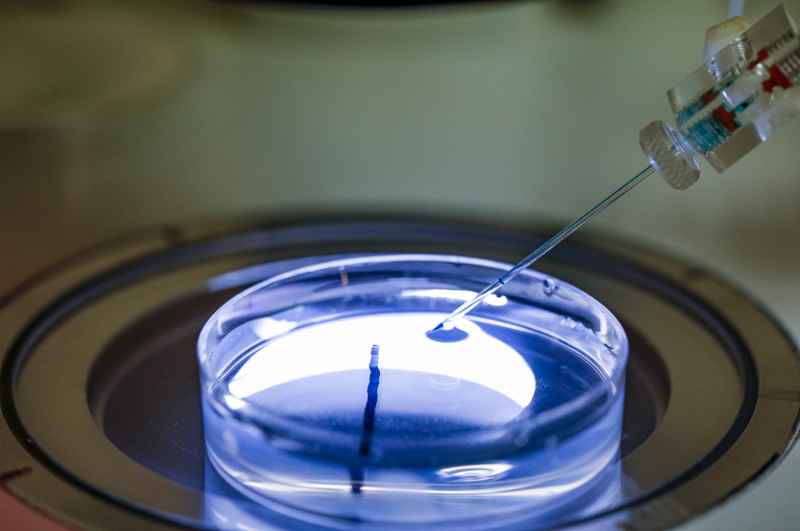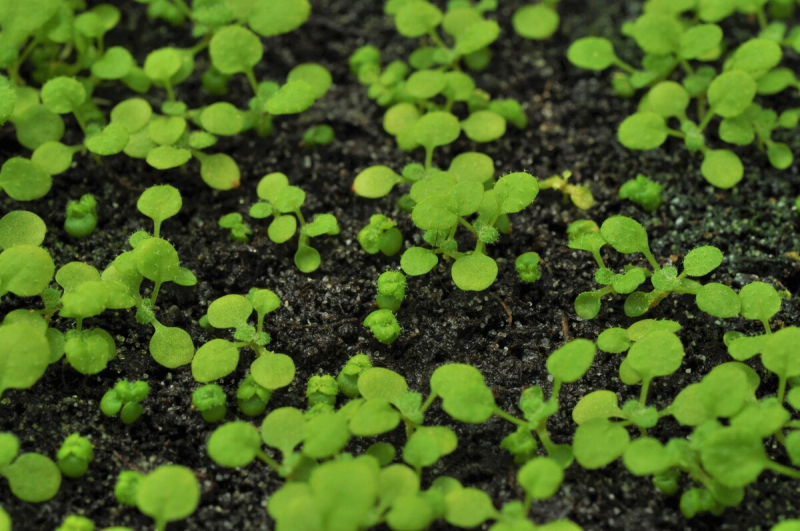
Why research stakeholders are supporting new European legislation on GMOs
The CNRS is a member of the G6 which recently gave its informed opinion on the use of new genomic techniques. This came in December 2023 and the European Parliament plenary session is due to vote in the coming days on adapted legislation on genetically modified organisms.
Major changes could be ahead for European legislation on genetically modified organisms (GMOs). Last summer, the European Commission proposed a revision of regulations in this area to take technical developments in the field into account more effectively. This text still has to be put to the vote in the European Parliament but has already received the support of the G6 which suggests additional ways to move forward in its press release published online.
The G6, a network of six major European research organisations
The G6 is an informal network of Europe's main research organisations: the Consiglio Nazionale delle Ricerche in Italy, the CNRS in France, the Consejo Superior de Investigaciones Científicas in Spain and Germany's Helmholtz Association, Leibniz Association and Max Planck Society. This network represents a total of over 142,000 employees and proposes joint initiatives and frequent exchanges (French link) on subjects of interest to the European research sphere. Their argument on GMOs here is based on the emergence since 2018 of a revolution in biology that could enable a considerable reduction in the use of pesticides and fertilisers in agriculture while also improving food safety.

Using molecular scissors to modify the genome
“There is a lack of information on GMOs – a very broad term that encompasses new genomic techniques (NGTs) for example”, insists Cécile Bousquet-Antonelli, deputy scientific director at CNRS Biology and a research professor at the CNRS Institute of Plant Molecular Biology in Strasbourg1 . “NGTs use CRISPR molecular scissors2 to edit the genome of living organisms. This is a much faster, more precise and more effective method than previous approaches provided. The modifications are so targeted and effective that transgenesis - the addition of genes from other species - is no longer required”.
While transgenesis is authorised in certain countries such as the United States, the technique is still banned in the European Union and neither the European Commission nor the G6 wish to see this ban reversed.
NGTs function by using genes that are naturally observed in varieties and ancestors of the same species. “The idea is to authorise genetic modifications that could have been obtained through conventional methods like grafting or cross-breeding”, continues Cécile Bousquet-Antonelli. “If an interesting gene can be found in nature then NGTs mean we can benefit from it almost right away”. She cites the example of teosinte, the common ancestor of maize. This lowland wild grass still grows in Mexico and its genes make it more resistant to drought than cultivars. NGTs are thought to help confer these qualities on all varieties of maize and to enable the reproduction or inhibition of genes naturally observed in varieties and ancestors of the same species. This assisted process is comparable to the hundreds (if not actually thousands) of genetic modifications that occur naturally or through cross-breeding.
Unless researchers have advance knowledge of which sequence has been modified, the absence of genes from other species means it is not possible to differentiate between a plant that acquired a gene through cross-breeding and selection from a specimen that acquired that gene through an NGT. Strictly speaking, the G6 scientists specialising in this field consider these organisms should not be classified as GMOs in the popular sense of the term.
This similarity with the natural evolution of genomes or with classic plant crosses could mean plants obtained using NGTs can be used in organic farming without distinction but this major change is already attracting criticism. Cécile Bousquet-Antonelli qualifies this by explaining that, for example, “organic farming already authorises the use of Bordeaux mixture which contains copper or of nitrogen-based fertilisers and both of these are poorly assimilated by plants. All of the surplus ends up in the water table”.

Continuing research into NGTs outside greenhouses
The G6 stresses that NGTs could be used to study different biological processes, explore and enhance plant resistance mechanisms to stress and pathogenic attacks, ensure food security in the context of climate change and reduce the number of inputs required to grow crops. However, to work towards this goal the G6 proposes that researchers should be allowed to grow NGT-modified plants outside strictly controlled greenhouses. This would enable study of the development of such plants in a wider range of situations that are closer to conditions in nature. Scientists work by modifying genes and then checking what this changes for the plants involved under a whole range of conditions.
“This is the only way for us to understand how plants adapt to drought or excessively chalky soils, how they find nutrients and so on”, explains Cécile Bousquet-Antonelli. “It is possible to reproduce these conditions in the laboratory but it's still difficult and the results are incomplete. And the task quickly becomes impossible without access to fields if you want to combine several factors”. This is why the G6 wishes to increase the amount of GMO trials carried out outside greenhouses.
“Current legislation is hindering (French link) the development of applied research and collaboration with industry”, continues the biologist. “Plant varieties obtained through selection, or cultivars, give higher yields and have greater resistance to pathogens but this legislation restricts our capacity to commercialise them whereas countries like the United States, Chile and Australia are free to do this. This is a real issue for the development of knowledge in the area, French competitiveness and employment”.
CNRS Biology's deputy scientific director does however point out that the aim is not to create varieties that are immune to certain herbicides and pesticides which is often the case in countries that already use transgenesis. This approach has been denounced many times because of the damage it causes to the environment. It must remain an objective to limit inputs, particularly nitrates. Cécile Bousquet-Antonelli gives the example of work being done in some of our laboratories on improving CRISPR tools and studying the exchanges between plants and micro-organisms (French link). The scientist explains that “we know some plants have beneficial interactions with micro-organisms at root level which enables them to capture and highly efficiently use nutrients that are naturally present in the soil. However, some species of agronomic interest including cereals are not capable of such symbioses. Our researchers are working to find out more about how these symbioses work. NGTs mean we can envisage giving cultivated species the ability to interact with beneficial micro-organisms. This would make them more efficient in drawing nutrients from the soil and in turn reduce the inputs needed to cultivate them”.
The CNRS and the G6 have presented their arguments in favour of this change in legislation and of taking the issue even further to representatives of the European Commission and Parliament. The answer will be given in February 2024, when the new legislation is examined by the Parliament.



